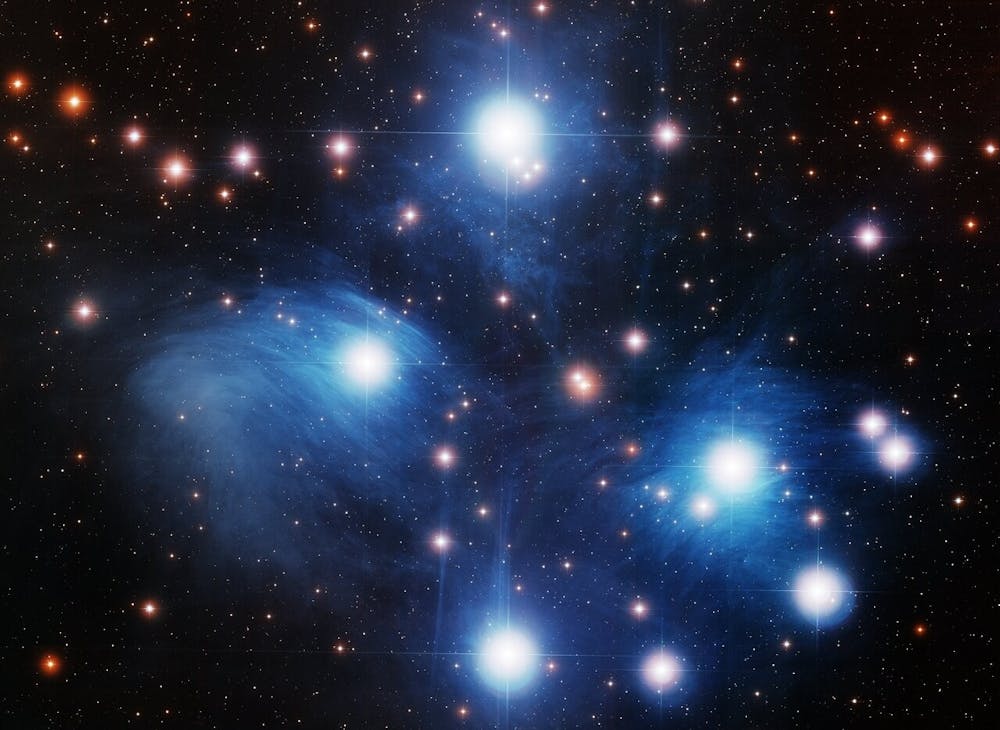As scientists’ understanding of the universe’s origins expands, IU associate professor Constantine Deliyannis is working to explain discrepancies with current models of star evolution in new research.
Most astronomers today say our universe emerged in a violent explosion commonly known as the Big Bang, approximately 13.8 billion years ago. The entire universe was packed into an infinitely small area, then suddenly expanded to the size of a galaxy in a fraction of a second, Deliyannis said.
Related: [Bloomington to receive $1.9 million in grant funding]
As the universe continued its expansion and cooled down, protons and neutrons began to coalesce into nuclei, which formed the first atoms of hydrogen, helium, and trace amounts of lithium. As the universe expanded further, gravity converged these elements into the first stars, and eventually galaxies.
“Gravity makes things attract together,” IU physics professor Mike Berger said. “In the early universe, things were all about the same density, but as the universe grew, places with high density attracted more matter until larger structures formed.”
Professor Deliyannis’ research is primarily focused on the levels of lithium in the upper atmosphere of stars. Throughout his career, he has found there are major discrepancies between the levels of lithium predicted to exist in stars from the Big Bang, and what is actually observed in them.
Using helioseismography, the study of the sound waves produced by the sun, astronomers have found that standard solar models have described the inner structures of the sun with great accuracy, Deliyannis said. However, the levels of lithium are off.
“This standard model of solar evolution predicts that the current lithium abundance of the sun should be approximately 1/3 of what it started out with,” Deliyannis said. “However, this is actually about 0.7%, which is a huge discrepancy, even in astronomy.”
The rotation of stars must be considered, too, Deliyannis said. As stars age, they spin down, but don’t spin down uniformly. Due to angular momentum, the outer layers of stars tend to slow down faster than the inner layers. This difference in rotation between a star’s layers creates a shear, which ultimately causes mixing between layers to occur, explaining the discrepancy of lithium.
Once astronomers understand and accurately model these discrepancies, they will be able to transfer their knowledge to the first generation of stars and be able to determine the amount of lithium that formed in the Big Bang, Deliyannis said.
“If we can figure out how much lithium those stars formed with, then that provides a really good test of the Big Bang theory,” Deliyannis said.
Related: [Indiana family commits gift to study gun violence at IU School of Public Health]
Deliyannis uses multiple telescopes to conduct his research, including the 3.5-meter WIYN telescope at Kitt Peak in Arizona. Using spectroscopy, which involves sending the light from a star’s atmosphere through prisms to detect the traces of elements, Deliyannis can find accurate measurements of lithium in stars.
As light is sent through prisms, elements reveal themselves through dark spots in the rainbow spectrum of visible light. By measuring these dark spots, astronomers can determine the amounts of certain elements there are in a sample of light, Vinicius Placco, associate astronomer at the National Optical-Infrared Astronomy Research Laboratory, said.
“You would see the colors going from violet to blue, then to red, and infrared,” Placco said. “All of those discontinuities, those are the fingerprints of the chemical elements in the atmosphere of stars.”
Through this method, astronomers like Deliyannis can explain discrepancies in current theories of how the universe came to be the way it is, which leads to the confirmation of existing theories or perhaps a call to investigate further.
“What we are trying to do is explain how the universe evolved chemically,” Placco said. “I think it’s important in the sense that you can discover where we came from.”




